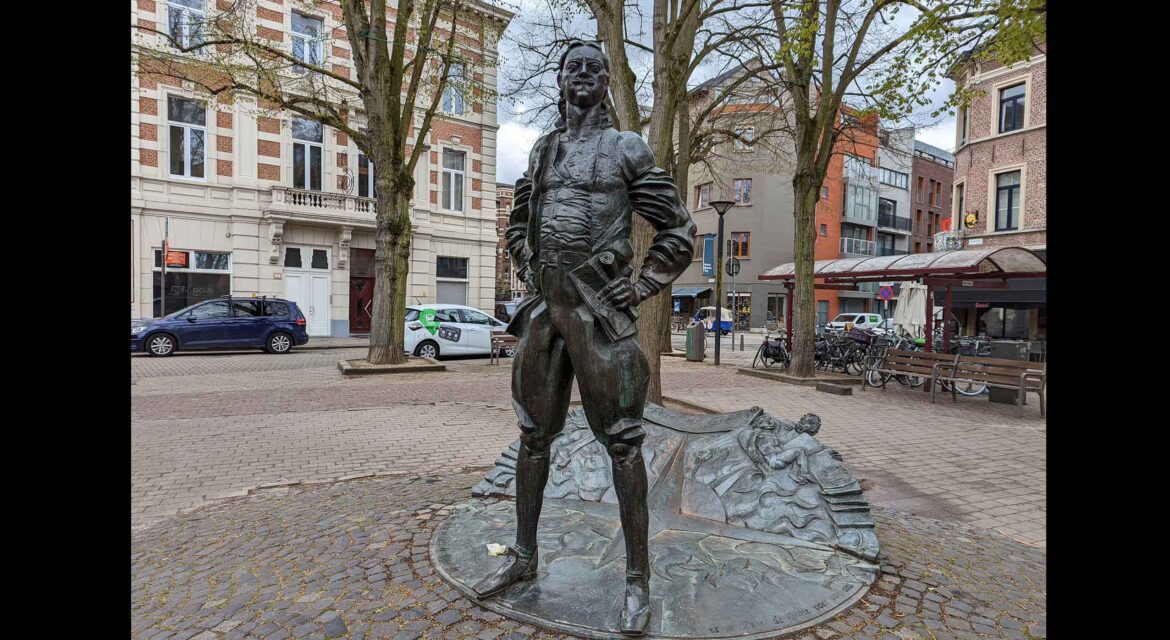 A statue of Peter the Great defines a section of the Kloosterstraat, which is one of the most popular streets in Antwerp, Belgium. Providing audiences with a sense of history as well as an identity that makes it distinct in the city and region, the Monument to Peter the Great is an incredible example of what it can mean to cultivate engagement in a space that might otherwise be empty or unremarkable.
A statue of Peter the Great defines a section of the Kloosterstraat, which is one of the most popular streets in Antwerp, Belgium. Providing audiences with a sense of history as well as an identity that makes it distinct in the city and region, the Monument to Peter the Great is an incredible example of what it can mean to cultivate engagement in a space that might otherwise be empty or unremarkable.

Commemorating a Visit of Peter the Great
 Peter the Great was the Czar of Russia from 1672 until 1725, during which time he reformed the country on multiple levels. He is widely recognized as one of the most significant leaders of his era as well as one of the most important leaders in all of Russian history. In 1717, he visited Antwerp and stayed at St. Michael’s Abbey, which resided near the area where the Monument to Peter the Great now stands.
Peter the Great was the Czar of Russia from 1672 until 1725, during which time he reformed the country on multiple levels. He is widely recognized as one of the most significant leaders of his era as well as one of the most important leaders in all of Russian history. In 1717, he visited Antwerp and stayed at St. Michael’s Abbey, which resided near the area where the Monument to Peter the Great now stands.
The endeavor to create this piece was begun and was also supported by the Antwerp-based firm Art Group International group in the late 1990s. The organization wanted to strengthen the cultural ties between Antwerp and Russia after the fall of communism. Their efforts would lead to the piece being unveiled in 1998.
Created by Georgy Frangulyan, the sculpture depicts a larger-than-life Peter the Great posing in triumph. The statue stands on a pedestal that rises up from the ground and features a large compass. At the very top are two angels along with very small version of the coats of arms of both Antwerp and Russia. The pedestal says “Peter the Great set his foot here in 1717” in both Dutch and Russian.
Booksellers, antique stores, and restaurants line the Kloosterstraat, providing both residents and visitors with a destination that features various things to do. The Monument to Peter the Great has given it a true identity though, creating a deeper level of engagement that keeps audiences coming back to the area.

Actively Cultivating a Legacy
 Peter the Great’s visit to Antwerp was just one of the places he stopped during a bigger trip, highlighting what it can mean for a monument to cultivate a legacy. What might otherwise be a historical footnote or an empty plaza has instead been utilized to create engagement with audiences that spans multiple cultures and eras.
Peter the Great’s visit to Antwerp was just one of the places he stopped during a bigger trip, highlighting what it can mean for a monument to cultivate a legacy. What might otherwise be a historical footnote or an empty plaza has instead been utilized to create engagement with audiences that spans multiple cultures and eras.

